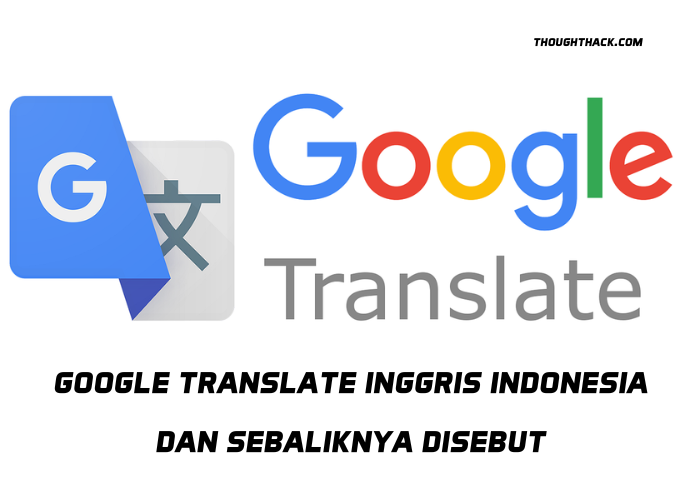
In an increasingly interconnected world, language barriers are gradually fading into oblivion. Thanks to technological advancements, communication between people from different linguistic backgrounds has become easier than ever before. Google Translate, one of the most remarkable tools in this regard, has revolutionized the way we bridge these gaps. In this article, we will delve into the intricacies of Google Translate, particularly its prowess in translating between English and Indonesian, and explore how it has evolved over the years.
The Birth of Google Translate
Google Translate, often referred to as Google Terjemahan in Indonesia, was officially introduced to the world in April 2006. It marked a significant milestone in the realm of online language translation. Powered by sophisticated algorithms and artificial intelligence, Google Translate aimed to break down language barriers by providing instant translations between numerous languages.
The Basics of Google Translate
Before we delve into the specifics of translating between English and Indonesian using Google Translate, let’s understand the basic mechanics of this powerful tool.
Google Translate uses a statistical machine translation method to generate translations. It analyzes vast amounts of text data from various sources, such as books, websites, and documents, to make informed predictions about how to translate a given text. Over time, Google Translate has transitioned to a neural machine translation system, which employs deep learning techniques to enhance translation quality further.
Inggris Indonesia Dan Sebaliknya Disebut
The phrase Inggris Indonesia Dan Sebaliknya Disebut translates to English to Indonesian and vice versa in English. This succinctly captures the essence of Google Translate’s capabilities providing translations in both directions for these two languages. Whether you are an English speaker looking to communicate with an Indonesian friend or an Indonesian speaker trying to understand an English document, Google Translate is your go-to tool.
The Evolution of Google Translate
Since its inception, Google Translate has undergone numerous updates and improvements, making it more accurate and user-friendly. One significant transformation was the shift from rule-based translation to machine learning-based translation.
Phrase-Based Machine Translation (PBMT)
In the early days, Google Translate primarily used PBMT, which broke down sentences into smaller phrases and translated them individually. While this approach was functional, it sometimes resulted in awkward translations.
Neural Machine Translation (NMT)
The transition to NMT marked a breakthrough in translation quality. NMT models consider the entire sentence context, resulting in more coherent and contextually accurate translations. This transformation significantly benefited the English-Indonesian translation.
Continuous Learnin
Google Translate constantly learns from user input. When users suggest corrections or provide alternative translations, the system adapts and improves over time, refining its accuracy.
Challenges in Translating Between English and Indonesian
Translating between English and Indonesian is not without its challenges. These languages belong to different language families and have distinct grammatical structures and vocabulary. Here are some common hurdles that Google Translate faces when handling these language pairs.
Word Order
English follows a subject verb object (SVO) word order, whereas Indonesian uses a subject-verb-object (SVO) or subject object verb (SOV) structure. This difference in word order can lead to translation difficulties.
Grammatical Differences
Indonesian lacks grammatical gender and has a relatively simple verb conjugation system compared to English. Google Translate needs to navigate these differences accurately.
Cultural Nuances
Translating idiomatic expressions and cultural references can be tricky. Understanding the context and cultural nuances of both languages is crucial for producing accurate translations.
Ambiguity
Like any language, both English and Indonesian have words or phrases with multiple meanings. Google Translate needs to discern the intended meaning based on the context.
Tips for Using Google Translate Effectively
While Google Translate is a powerful tool, it’s essential to use it wisely to ensure accurate translations. Here are some tips for harnessing its full potential:
Double Check Important Translations
For critical documents or communications, it’s always a good practice to double-check translations with native speakers or language experts.
Use Short, Clear Sentences
Simplicity in language helps Google Translate produce more accurate translations. Avoid complex sentence structures and jargon.
Consider Cultural Context
Be mindful of cultural differences when using idiomatic expressions or references that may not translate accurately.
Provide Feedback
If you come across an inaccurate translation, provide feedback to Google Translate. This helps improve the tool’s accuracy over time.
Conclusion
Google Translate, or Google Terjemahan, has come a long way in breaking down language barriers between English and Indonesian speakers. Its evolution from rule based to neural machine translation has significantly improved translation quality. However, it’s important to remember that while Google Translate is a valuable resource, it may not always produce perfect translations, especially for complex or culturally nuanced content.
As technology continues to advance, we can expect Google Translate to become even more sophisticated and capable of handling the intricate subtleties of language. In the meantime, it remains a powerful tool for connecting people across linguistic divides, ensuring that Inggris Indonesia Dan Sebaliknya Disebut is no longer an insurmountable challenge.




